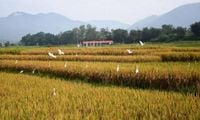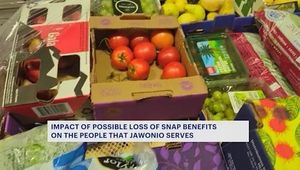On the morning of October 29, 2025, Nepal awoke to a nation on edge. The day before, a Gen Z-led protest had erupted into violence, leaving more than twenty people dead and cities across the country reeling from the shock. The government, in a desperate attempt to regain control, imposed curfews across several urban areas, but the sense of unease was palpable. For many, including one Kathmandu family, the chaos would soon become deeply personal.
According to firsthand accounts published in Republica, the violence of the Gen Z protest was unlike anything the country had seen in decades. The protest, initially sparked by a government crackdown on social media, quickly grew into a nationwide uprising. Young people rallied against what they saw as systemic corruption, economic exclusion, and governance failures. Their anger was not just political; it was personal. Many had watched their opportunities dwindle as unemployment soared and rural communities emptied out, with over 20% of Gen Z out of work and more than 60% of the population still tied to a struggling agricultural sector.
The violence reached a fever pitch on October 30, as protestors openly defied curfew orders. Mobs burned tires in the streets, attacked ministers, and even set fire to Singha Durbar, the seat of Nepal’s government. The army was deployed, but the capital felt leaderless and adrift. In the midst of this turmoil, two elderly parents set out for a simple trip to Jalbinayak Temple, hoping their faith would shield them from the unrest. Instead, they found themselves stranded at Shahid Gangalal Hospital, trapped by the chaos unfolding outside.
Their daughter, a millennial structural engineer based in Kathmandu, recounted the harrowing ordeal in Republica. She described the agony of waiting for news, her phone constantly tethered to the charger as she scrolled through social media for updates. "There have been protests before, but I have never witnessed a government so tyrannical—one that would aim at its children as if they were not flowers of the nation but enemies of war," she wrote. The images of children struck down by bullets haunted her, as did the knowledge that her own younger relatives had narrowly avoided becoming casualties themselves.
For three long days, her parents remained trapped in the hospital, unable to return home as violence raged in the streets. The city was in chaos: agitators torched Ullens School, mobs roamed with sticks, and ministers’ homes were vandalized and looted. The government, already on the brink, collapsed under the pressure, and the army issued shoot-on-sight orders for civilians defying curfew. Only on November 1, when the military briefly relaxed restrictions, were the couple able to make their way home—exhausted, shaken, but safe.
Their story is just one thread in a much larger tapestry of unrest. According to Republica, the Gen Z protest was not merely a reaction to a single event, but a culmination of years of frustration. The youth of Nepal demanded more than just political change; they called for a complete overhaul of the country’s food system and governance structures. As detailed by Mainali, a value chain specialist at FAO Nepal, the protests were a "clarion call for the systematic reformation of the pillars of Nepal's development, including in Nepal's food system."
Despite the fact that agriculture remains the backbone of Nepal’s economy, the sector is plagued by inefficiency and inequality. Farmers, including many young people, struggle with inadequate access to quality seeds and fertilizers, poor resource management, and a lack of transparency in subsidy distribution. Climate change looms large, with scientists warning that agricultural yields could drop by 20-30% by 2050 due to delayed monsoons and drought. The protests highlighted these vulnerabilities, linking rural economic struggles to broader environmental challenges.
Gen Z’s vision for Nepal’s future is ambitious. They want a resilient, equitable, and transparent food system—one where young people have a decisive role in shaping policy and practice. This includes digital platforms to track subsidies, youth involvement in monitoring and governance, and regular public audits of agricultural programs. The hope is that these measures will ensure resources reach marginalized farmers and that the foundation of food and nutritional security is safeguarded for future generations.
Structural inequalities, particularly those based on ethnicity, caste, and gender, were also thrust into the spotlight. Women perform 66% of agricultural labor in Nepal but own less than 10% of the land, a disparity that Gen Z activists say must be addressed through land reform and inclusive credit schemes. The protests also called for investment in infrastructure—better rural roads, decentralized cold storage, and solar drying facilities—to reduce post-harvest losses and improve food access across the country.
Perhaps most importantly, the 2025 protests underscored the power and potential of Nepal’s youth. As Mainali put it, "The 2025 protests signaled Gen Z's power and frustration, but also, at the same time, potential to drive transformative change." The movement’s leaderless, decentralized nature made it difficult for authorities to suppress, but it also demonstrated a remarkable unity of purpose. Young people demanded credible representation in the governance of Nepal’s agri-food system, from policy boards to local training initiatives and ag-tech incubators.
There is a growing consensus among experts that Nepal needs a comprehensive Agri-Food Systems National Framework—one that incorporates transparency, good governance, and meaningful youth engagement. Such a framework would not only address immediate concerns about food security and economic opportunity, but also lay the groundwork for a more inclusive, sustainable future. International partnerships, public-private collaborations, and the integration of indigenous knowledge and regenerative practices could help turn the energy of the protests into lasting reform.
As the dust settles in Kathmandu and across Nepal, the memories of those tumultuous days remain raw. Families like the one described in Republica will carry the scars of fear and uncertainty, but also the hope that their country can emerge stronger and more just. The Gen Z movement, born out of frustration and loss, has given voice to a new generation determined to shape Nepal’s destiny on their own terms. Their demands—for justice, transparency, and a seat at the table—may well define the country’s path for years to come.




